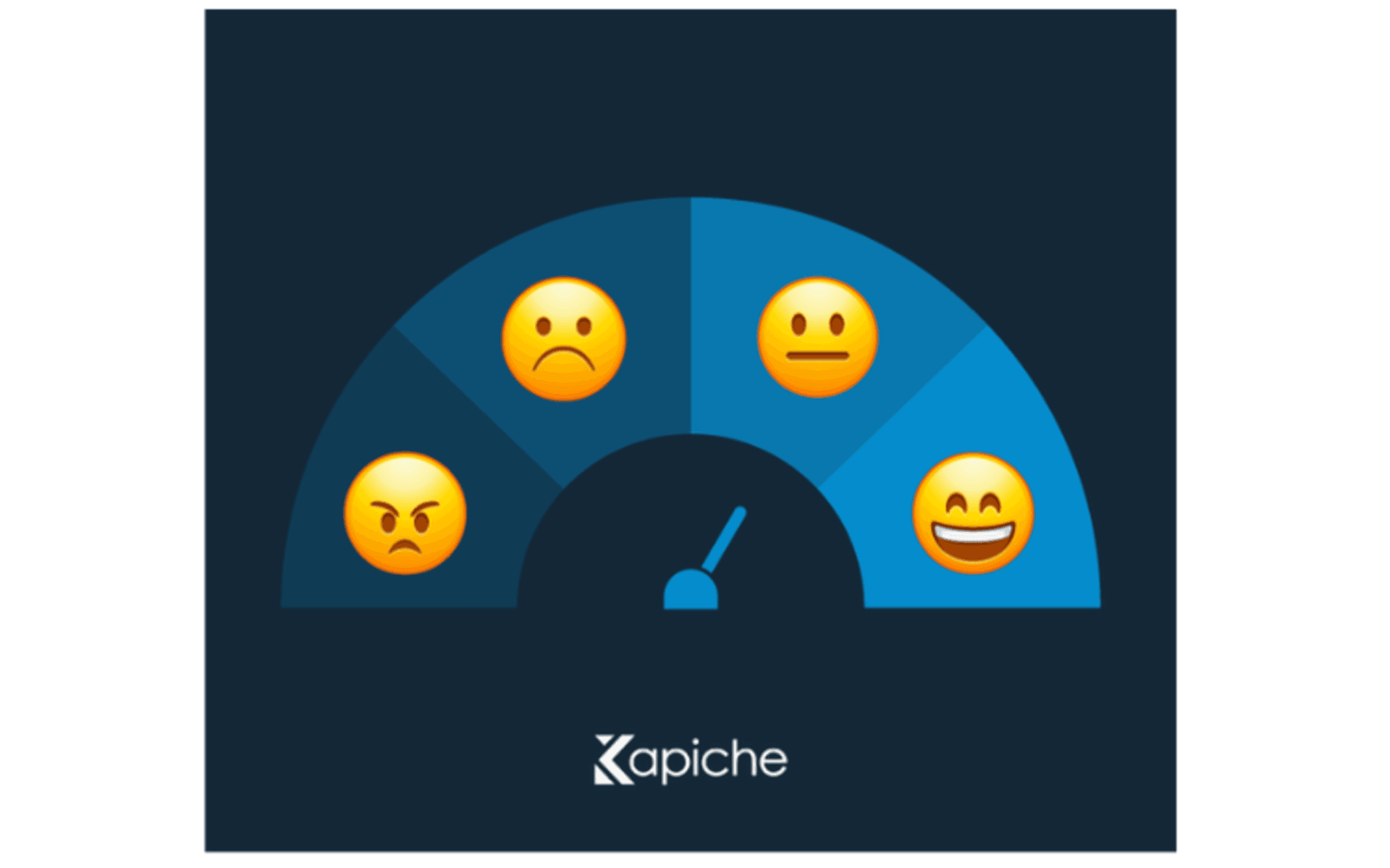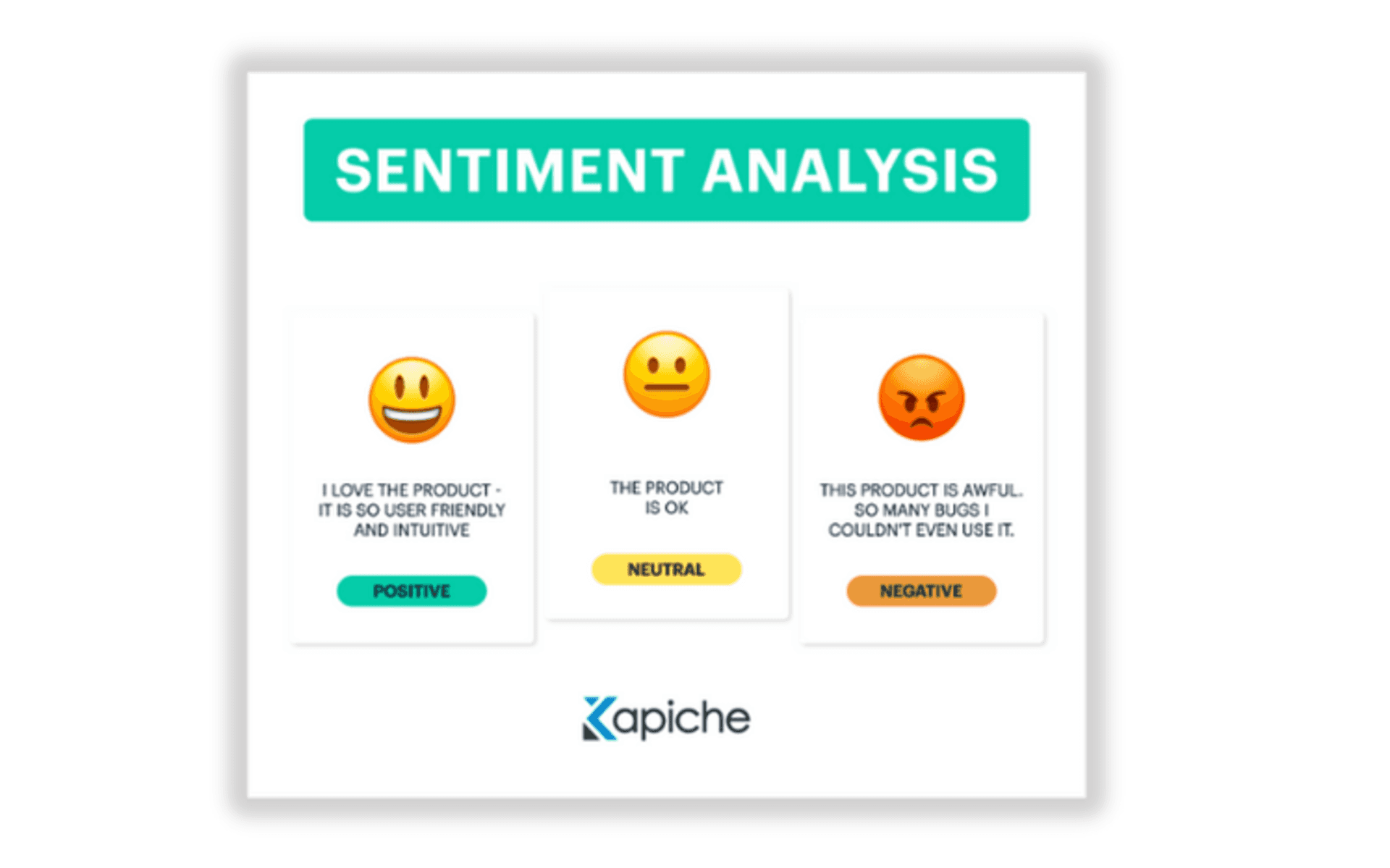When it comes to understanding your customers, every opinion is a compass guiding you towards more clarity on how your customers really feel. For leaders in customer insights and experience, understanding customer sentiment isn't just a task—it's a strategic imperative.
We know navigating the world of customer feedback is not easy. In this article, we want to provide a map for how to monitor customer sentiment well, and how you can leverage your findings to drive massive results in your business.
But first, let's clear up any misconceptions about customer sentiment itself.
What is Customer Sentiment?
At its core, customer sentiment includes the emotions, opinions, and perceptions that customers feel towards a brand, product, or service. It's the collective voice of your audience, echoing their satisfaction, frustrations, loyalty, and expectations experienced across every touchpoint and interaction.
Sentiment can range from positive to negative, or neutral, and is influenced by many factors like product quality, customer service, pricing, brand reputation – just about every component of your business that customers interact with.

Benefits of Customer Sentiment Analysis
Understanding customer sentiment isn't just a nice to have. It's a game-changer for businesses striving to excel in a digital-first environment.
Let's dive into the myriad benefits that come from a strong grasp of your customer sentiment.
Improved customer experience
Customer sentiment analysis uncovers the emotions and opinions driving customer interactions. Deciphering sentiment from customer feedback helps you better tailor experiences to match customer expectations, fostering satisfaction, customer loyalty, and positive word-of-mouth.
Early issue detection
Negative sentiment trends can indicate underlying issues affecting customer satisfaction. By monitoring sentiment metrics, you'll become more equipped to swiftly address concerns, prevent escalations, and mitigate potential risks to brand reputation.
Improved decision-making
Customer sentiment insights serve as a compass guiding strategic decisions across departments. From product enhancements to marketing campaigns, sentiment data provides actionable intelligence that gets rid of a lot of guesswork. So you can align initiatives with more data, and less theory.
Customer-centric culture
Embedding sentiment analysis into your processes fosters a more customer-centric mindset for your team. When every department—from product development to customer support—values and leverages customer sentiment, it creates a unified approach focused on delivering exceptional experiences.
Competitive advantage
Deep sentiment analysis uncovers competitive strengths and weaknesses, highlighting areas for differentiation or innovation. Sentiment is often an initial key here. With customer sentiment analysis, you'll have insights to refine your unique value proposition and offers, to stay ahead of the competition.
Limitations of Customer Sentiment
Before we dive into how to collect great customer sentiment data, it’s helpful to keep in mind what the data can and cannot do for your business. Sentiment is highly subjective and experience-based, so technology can only do so much to understand the nuances of comments, conversations, or emojis scattered across digital channels. Things like sarcasm, irony, hyperbole, or colloquialisms are harder to tease out, even for the highly capable AI and machine learning tools available today.
For example, a phrase that contains the word ‘disappointed’ might trigger the comment as negative, without considering the words around it. But it is also possible for ‘disappointed’ to be used in a positive context, like ‘I’m not disappointed.’
So, you’ll want to set up your sentiment tools with protocols to account for phrases in your category or niche, but be aware that AI may need some help interpreting some of the most human, emotive elements of lived experience.

Key Elements of Customer Sentiment
Customer sentiment analysis includes a handful of nuanced elements. As a collective, they contribute to your overall sentiment scores and perceptions.
To get a handle on how your customers feel about your brand, it's helpful to keep these elements in mind:
Emotions: evaluate the emotional tone of customer feedback—positive, negative, or neutral. Identify emotions such as joy, frustration, satisfaction, disappointment, trust, and enthusiasm expressed by customers.
Attitudes: assess the overall attitudes, opinions, and beliefs customers have about you. This may include your brand, product features, services, or customer experience as a whole.
Intentions: aim to gauge your customers' intentions based on sentiment indicators. For example, you can measure the likelihood of repurchase, recommendations, brand advocacy, or churn, based on the level of positive customer sentiment and experiences.
Contextual analysis: dive deep into your qualitative data, customer interactions, and historical trends to contextualize sentiment scores. You'll want to get a firm grip on the driving factors behind expressions of positive sentiment across the customer journey, and any pain points driving negative sentiment.

How to Measure Customer Sentiment
Measuring customer sentiment requires a strategic approach. You need to tap into diverse data sources, get advanced analytics tools in place, and have the right KPIs in place to track trends over time.
Here are essential steps to measuring customer sentiment effectively:
1. Define sentiment goals
Identify priority sentiment metrics aligned with your business objectives. They may not be the same as your competitor's. Metrics like Net Promoter Score (NPS), Customer Satisfaction Score (CSAT), sentiment polarity are common ones. But pick what best supports your overall business strategy.
2. Collect data from multiple sources
Aim to gather customer feedback from surveys, social media interactions, online reviews, emails, support tickets, and other touch points. Diverse data sources provide a comprehensive view of customer sentiment across various channels and interactions.
3. Use sentiment analysis tools
Leverage advanced analytics, natural language processing (NLP), and machine learning algorithms to analyze textual data and extract sentiment insights. You'll want to pick a sentiment analysis tool that's capable of processing large volumes of unstructured data, and providing accurate sentiment scoring.
4. Monitor real-time sentiment
Implement real-time sentiment monitoring tools to track customer sentiment changes. Keeping your finger on the pulse of emerging trends will help you stay alert to critical sentiment shifts that need immediate attention.
5. Segment and analyze customer sentiment
Segment sentiment data based on customer demographics, product and service categories, or interaction channels. This way, you'll be able to draw more meaningful conclusions from your data. Conduct in-depth analysis to uncover sentiment drivers, patterns, and actionable insights for improvement.

Choosing Software to Track Customer Sentiment
Choosing the right software to measure and monitor customer sentiment is crucial. Your tools will make the difference between just collecting a lot of interesting data, and having the confidence and agility to drive actionable outcomes from your findings––quarter after quarter.
Here are some features to look out for when selecting your customer sentiment analysis tool:
Advanced sentiment analysis: opt for tools equipped with advanced sentiment analysis capabilities that can accurately analyze and categorize customer sentiments as positive, negative, or neutral. Look for solutions that utilize natural language processing (NLP) and machine learning to understand nuanced sentiments and context.
Multichannel data integration: ensure the software can integrate data from various sources such as surveys, social media platforms, emails, chats, and customer feedback forms. Comprehensive data integration gives you a flexible and holistic approach to tapping into customer sentiment across different touch points and channels.
Real-time monitoring: choose a tool that offers real-time monitoring and alerts for changes in customer sentiment trends. The ability to promptly identify shifts in sentiment gives you a competitive advantage of being able to address issues promptly and capitalize on positive trends.
Customizable dashboards: Look for platforms that offer customizable dashboards with intuitive visualization tools. Customizable dashboards allow users to track key sentiment metrics, trends, and insights relevant to their specific business goals and KPIs, enhancing decision-making capabilities. At Kapiche, for example, we've built out a comprehensive dashboard that seamlessly integrates all your data into one source, and creates easy-to-use data visualizations.
Sentiment trend analysis: Prioritize tools that provide sentiment trend analysis over time. This will enable you to track sentiment fluctuations, seasonality, identify patterns, and measure the impact of initiatives on sentiment levels. Historical sentiment data is handy to have for forecasting and strategic planning.
Integration with CRM systems: Consider the integrations you'll need with your existing tech stack, and make sure you can do them. The software should integrate with your relationship management (CRM) system, whether you're with such as Salesforce, HubSpot, or Zendesk. Without this, you'll likely run into issues operationalizing any plans to personalize interactions based on your sentiment insights.
Scalability and Flexibility: While you might not need it now, pick a platform that has some room to grow. Scalable solutions will better accommodate your growing data set, and business needs. Look for flexible deployment options, such as cloud-based or on-premises solutions, flat fee pricing, do your homework to make sure tools are built with growth and scale in mind.
Security and Compliance: Ensure the software adheres to stringent security protocols and data privacy regulations, especially when handling sensitive customer feedback data. Look for features such as data encryption, role-based access controls, and compliance certifications (e.g., GDPR, CCPA) to safeguard customer information.
User Training and Support: Evaluate the vendor's training resources, support offerings, and user community to ensure seamless adoption and ongoing success with the software. Access to training materials, documentation, and responsive customer support will only enhance your program.

Tips for Improving Customer Sentiment
Once you have your tool in place, you'll need to put all your data to work. Elevating customer sentiment should always be the goal beyond analyzing the data.
Curious what your first steps could look like to build out sentiment-related initiatives?
Here are 7 actionable tips to start improving customer sentiment and drive positive interactions:
Listen actively: prioritize active listening across all of your customer touch points. Encourage customers to share feedback, concerns, and suggestions openly, and demonstrate a genuine interest in understanding their perspectives. If you are noticing any amount of negative sentiment, this one step will likely do wonders for you. Not only do you have a chance to demonstrate to frustrated customers that you care, you'll have a real opportunity to learn what they think and how to reduce customer churn.
Personalize interactions: Leverage your customer data and sentiment insights to personalize interactions at every stage of their customer journey. Data from McKinsey shows that personalization can increase revenues by up to 15% and increase the efficiency of marketing spend by up to 30%. So, it's worthwhile to look for opportunities to tailor your product recommendations, marketing messages, and support interactions based on individual preferences and sentiment indicators.
Address pain points: Use sentiment analysis to identify recurring pain points and challenges faced by customers. Take proactive measures to address those issues and improve your processes. Making it a habit to measure customer sentiment to fuel product development is a great way to enhance your products and services in a way that's closely aligned with customer expectations.
Empower frontline teams: Equip your customer service team with sentiment data and tools to offer great support. Often times, agents at the front-line hold the most power to address sentiment-related issues. They're the ones resolving conflicts, getting face time with the customer, and have the opportunity to exceed customer expectations in unexpected ways.
Continuous improvement: Set up a feedback loop based on customer sentiment analysis findings. Regularly review and act upon your customer feedback, measure improvements in sentiment scores, and iterate your strategies to ensure ongoing improvement of customer experiences across the board.
Collaborate across departments: Often, sentiment analysis will reveal opportunities to collaborate further across teams. Departments like marketing, product development, sales, and customer support can all benefit from aligning activities on clear sentiment insights. All your campaigns, growth initiatives, and messaging should support one another to create a cohesive and seamless experience that raises your customer sentiment score across the organization.
Collect qualitative insights: The best way to find out what customers really think is by asking them unaided questions like, 'tell us a story about your experience with us.' When done correctly, this means you'll get a load of qualitative responses in a free-text form. With this in mind, you'll want to establish a qualitative customer service metric to help you stay on top of how your service is translating to their raw experience.







